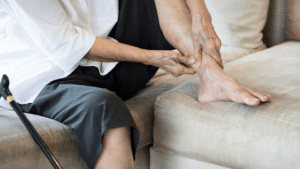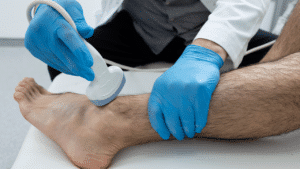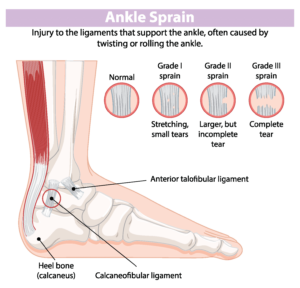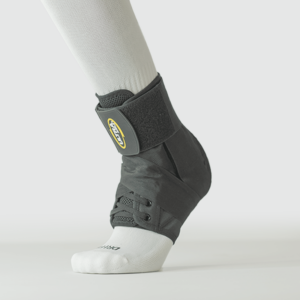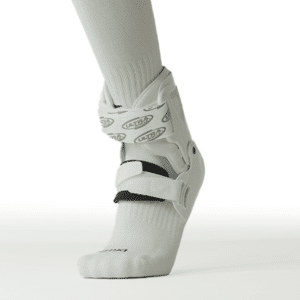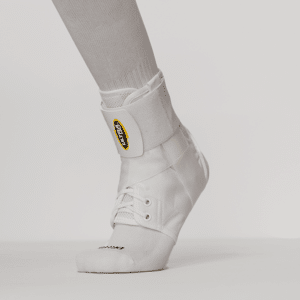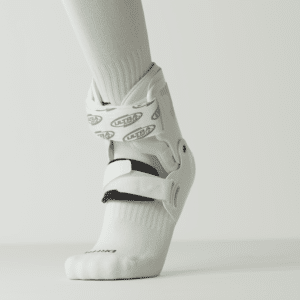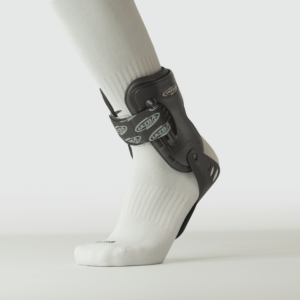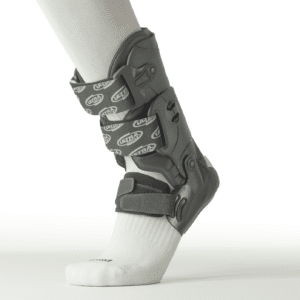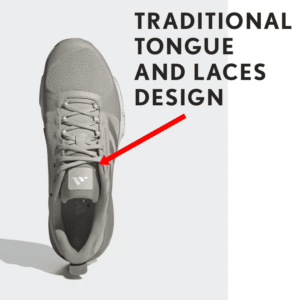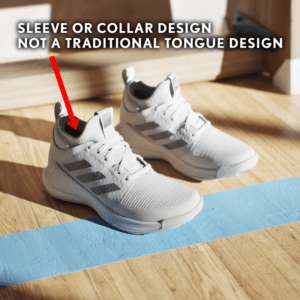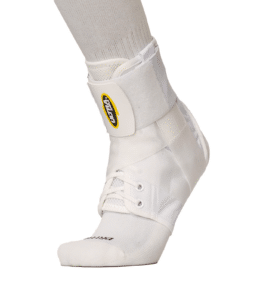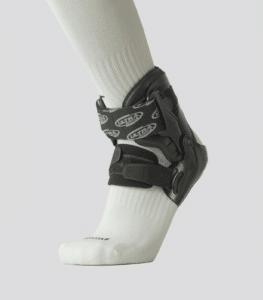Achilles Tendon Injury Treatment: How to Heal Quickly and Prevent Future Pain

Why Achilles Injuries Are So Common
If you’re an active adult, athlete, or just someone trying to stay fit, chances are you’ve felt it — that sharp pain or tightness along the back of your lower leg near the heel. Whether you’re hitting the pickleball court, running sprints, or jumping on the basketball court, Achilles tendon pain is one of the most common injuries keeping people from staying active.
For many, the issue starts as Achilles tendonitis — an overuse injury that leads to stiffness and swelling in the tendon. Left untreated, or if you keep pushing through the pain, it can escalate into something more serious, like a partial or full Achilles tendon rupture — a tear that can sideline you for months.
Understanding the signs of Achilles injuries, how to treat them, and the role of supportive tools like the Ultra Zoom® Hinged Ankle Brace can help you recover faster and prevent long-term damage so you can keep moving without pain.
What Are the Most Common Types of Achilles Tendon Injuries?

The Achilles tendon — the strong band of tissue connecting your calf muscles to your heel — is the largest tendon in your body. It plays a crucial role in helping you walk, run, jump, and push off the ground. Unfortunately, it’s also one of the most frequently injured tendons, especially among active adults and athletes.
According to the Mayo Clinic and Cleveland Clinic, there are two main types of Achilles injuries:
1. Achilles Tendonitis (Overuse Injury)
- What it is: A condition where the tendon becomes inflamed or irritated due to repetitive stress.
- Symptoms:
- Pain or tenderness along the back of the heel or lower calf.
- Morning stiffness or pain after periods of rest.
- Swelling or thickening of the tendon.
- Who gets it: Often affects recreational athletes or those who recently increased their activity levels, especially in sports like running, pickleball, tennis, and basketball.
2. Achilles Tendon Rupture (Partial or Complete Tear)
- What it is: A sudden tear of the tendon, which can be partial or complete. The American Academy of Orthopaedic Surgeons (AAOS) notes that ruptures are often the result of explosive movements like jumping or sprinting.
- Symptoms:
- A sudden “pop” or snapping sensation, often described as feeling like someone kicked you in the leg.
- Intense pain and immediate difficulty walking or bearing weight.
- Trouble pushing off with the foot or standing on your toes.
- Who gets it: Most common in active adults ages 30–50, especially those who participate in stop-and-go sports.
When to Seek Medical Attention
If you hear a pop, experience severe swelling, or can’t walk properly, see a doctor immediately. Early evaluation can confirm whether it’s tendonitis or a rupture and help you avoid longer recovery times.
What Causes Achilles Tendon Pain and Who’s Most at Risk?
Achilles tendon injuries often develop because the tendon is overworked, weakened, or suddenly stressed. According to the Mayo Clinic and Cleveland Clinic, several factors make you more likely to experience Achilles tendon pain or injury:
Common Causes
- Overuse and Repetitive Motion – Repeated jumping, sprinting, or sudden directional changes put constant stress on the tendon.
- Rapid Increase in Activity – Going from a sedentary lifestyle to playing sports like pickleball or running several times a week can overload the tendon.
- Tight Calf Muscles and Limited Flexibility – A lack of stretching before activity can pull on the tendon.
- Improper Footwear – Worn-out shoes or shoes without proper support can strain the tendon.
- Aging and Degeneration – Tendons naturally weaken with age, making middle-aged athletes especially vulnerable.
Who’s Most at Risk?
The AAOS notes that Achilles injuries are particularly common in:
- Adults between 30 and 50 years old who participate in recreational sports.
- “Weekend warriors” who play only once or twice a week but at high intensity.
- Athletes who train year-round in high-impact sports like basketball, tennis, and running.
Recognizing these risks can help you prevent injury and spot early symptoms, such as mild heel pain or stiffness, before it turns into something serious.
Best Treatments for Achilles Tendonitis and Ruptures

Recovering from an Achilles tendon injury depends on the type and severity of the injury. Whether you’re dealing with tendonitis (inflammation) or a rupture (tear), early and consistent treatment is the key to healing faster and reducing your risk of reinjury.
According to the Mayo Clinic and Cleveland Clinic, most mild-to-moderate cases of Achilles tendonitis can be managed without surgery. Ruptures, however, often require more intensive treatment or surgical repair.
Nonsurgical Treatment (For Tendonitis or Partial Tears)
- R.I.C.E. Therapy (Rest, Ice, Compression, Elevation)
- Using cold therapy helps reduce swelling and pain.
- The Ultra CHILL® Cold Therapy Compression Sleeve can be kept in the freezer and used after long days on your feet or post-workout to calm inflammation.
- Anti-Inflammatory Medications
- Over-the-counter NSAIDs like ibuprofen or naproxen can reduce pain and swelling.
- Physical Therapy and Stretching
- Gentle stretching and eccentric strengthening exercises can restore flexibility and strength to the calf and tendon.
- Bracing for Stability
- A walking boot may be used initially, followed by a hinged ankle brace like the Ultra Zoom® to stabilize the ankle while preserving natural movement — critical for long-term recovery.
Surgical Treatment (Often for Ruptures or Severe Tears)
When the tendon is partially or completely torn, surgery may be necessary. According to the AAOS:
- Surgery involves stitching the tendon back together, sometimes reinforced with other tissue.
- Recovery includes several weeks in a boot, followed by progressive rehabilitation and bracing.
Using a hinged brace like the Ultra Zoom® helps reduce stress on the tendon while maintaining flexibility and muscle strength.
How a Hinged Ankle Brace Like the Ultra Zoom® Helps Recovery
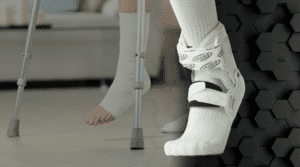
Most people think of ankle braces as tools to prevent rolling or spraining an ankle, not as aids in Achilles tendon recovery. But a hinged ankle brace does both.
According to the Cleveland Clinic, Achilles injuries often require 6–12 weeks of rehabilitation. During this time, unnecessary strain from walking, exercise, or sports can slow recovery or lead to reinjury. The Ultra Zoom® Hinged Ankle Brace addresses this by:
- Reducing stress on the Achilles tendon with stable, yet flexible support.
- Preserving natural range of motion, unlike lace-up braces that can weaken surrounding muscles.
- Supporting athletic performance, letting athletes jump, sprint, and cut confidently without added strain.
Offering FSA/HSA eligibility, a one-year warranty, and a 60-day “Wear the Brace” Return Policy for peace of mind. Returns in USED CONDITION will still receive a FULL PRODUCT REFUND.
How to Prevent Future Achilles Injuries and Stay Active

After an Achilles tendon injury, your risk of reinjury rises — especially in high-impact sports. To protect your tendon and keep playing without pain, the Mayo Clinic and AAOS recommend:
- Stretching and Strengthening – Calf stretches and eccentric calf raises help strengthen the tendon and surrounding muscles.
- Gradual Training Increases – Follow the “10% rule,” increasing weekly mileage or activity by no more than 10%.
- Proper Footwear – Replace worn shoes and use sport-specific footwear.
Bracing During Sports – Wearing a hinged brace like the Ultra Zoom® during intense activities can offload the tendon, reduce reinjury risk, and let you play more confidently.
Recover, Protect, and Stay Active with Ultra Ankle

Achilles tendon injuries can feel like they put your life on hold — whether it’s tendonitis slowing you down or a rupture keeping you off your feet entirely. But with the right combination of treatment, protection, and prevention, you can get back to doing the activities you love.
- Start with early treatment: rest, ice, physical therapy, and proper medical care.
- Use tools like the Ultra CHILL® Cryocompression Therapy Sleeve to reduce pain and inflammation during recovery.
- Protect your healing tendon and prevent future setbacks with the Ultra Zoom® Hinged Ankle Brace, designed to:
- Stabilize your ankle and reduce tendon stress.
- Maintain natural range of motion so you stay strong and mobile.
- Support both daily activity and athletic performance, from the court to the trail.
With Ultra Ankle, you can reduce pain, heal faster, and play with confidence — knowing you’re supported by orthopedic-grade protection trusted by athletes and active adults alike.
Ready to recover and get back to the game?
Explore the Ultra Zoom® Hinged Ankle Brace and Ultra CHILL® Cryocompression Therapy Sleeve today — so you can move, play, and perform without pain holding you back.
